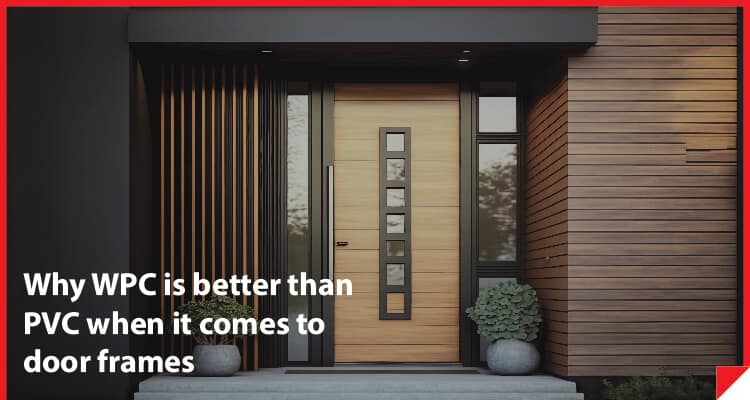WPC (Wood Plastic Composite) and PVC (Polyvinyl Chloride) are two popular materials used in the construction industry, particularly in the manufacturing of door frames. Both materials offer unique characteristics, but when it comes to comparing WPC door frames with PVC door frames, several factors set them apart.
Durability and Strength: One significant advantage of WPC door frames over PVC is their enhanced durability and strength. WPC, being a composite material composed of wood fibers and thermoplastics, combines the strength of wood with the resilience of plastic. This results in a door frame that is not only sturdy but also resistant to various environmental factors, such as moisture, insects, and rot. PVC, although durable, may not withstand these elements as effectively as WPC.
Moisture Resistance: WPC door frames exhibit superior moisture resistance compared to PVC. Wood fibers in WPC are encapsulated in a protective plastic shell during the manufacturing process, creating a barrier against moisture infiltration. This makes WPC door frames an ideal choice for areas prone to humidity or dampness, such as bathrooms and kitchens. On the other hand, PVC, while somewhat resistant to moisture, may not offer the same level of protection as WPC in environments with high humidity levels.
Aesthetic Appeal: In terms of aesthetics, WPC door frames often mimic the natural appearance of wood more closely than PVC. The inclusion of wood fibers in the composition gives WPC a textured surface that resembles traditional wooden door frames. This provides homeowners with the option to enjoy the aesthetic appeal of wood without compromising on the durability and low maintenance that WPC offers. PVC, although available in various colors and finishes, may lack the authentic look and feel that WPC provides.
Environmental Impact: For environmentally conscious consumers, WPC door frames present a more sustainable choice compared to PVC. WPC is often manufactured using recycled wood fibers and recycled plastic, making it an eco-friendly option. Additionally, the production process for WPC typically requires less energy compared to PVC, contributing to a lower overall environmental footprint. PVC, being a synthetic material derived from petrochemicals, raises concerns about its long-term environmental impact and sustainability.
Insulation Properties: WPC door frames offer better insulation properties compared to PVC. The combination of wood fibers and plastic in WPC provides enhanced thermal resistance, contributing to better energy efficiency in homes. This can be particularly beneficial in regions
with extreme temperatures, helping homeowners save on heating and cooling costs. While PVC also provides insulation to some extent, WPC’s natural composition tends to offer superior thermal performance.
Maintenance Requirements: When it comes to maintenance, both WPC and PVC door frames are relatively low-maintenance options. However, WPC’s resistance to moisture, insects, and decay often translates to fewer maintenance demands over time. PVC, though durable, may require more attention in terms of cleaning and upkeep, especially in areas with harsh environmental conditions.
In conclusion, while both WPC and PVC door frames have their merits, WPC emerges as a preferable choice for those seeking a balance between aesthetics, durability, and environmental considerations. The unique combination of wood and plastic in WPC door frames offers a robust solution that addresses the shortcomings of traditional materials. Homeowners looking for a long-lasting, visually appealing, and environmentally friendly option should consider WPC door frames as a valuable investment in their property.
